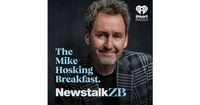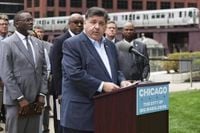On August 24, 2025, the streets of Washington, D.C. took on a new and unsettling look. Members of the National Guard, deployed at the direction of President Donald Trump, began openly carrying firearms—some with holstered handguns, others with rifles—marking a significant escalation in the federal government’s approach to policing the nation’s capital. According to the Associated Press, this move came after a directive from the president’s defense secretary, and it was swiftly put into action, with a Defense Department official confirming that only certain units on specific missions would be armed, while those involved in transportation or administrative work would remain unarmed.
The atmosphere in the city was tense. Thousands of National Guard members and federal law enforcement officers patrolled the streets, their presence drawing sporadic protests from local residents. Videos showing arrests and detainments quickly circulated on social media, only intensifying the sense of unease. The joint task force overseeing the operation reassured the public that all armed units were operating under strict rules for the use of force, stating that force would be used “only as a last resort and solely in response to an imminent threat of death or serious bodily harm.” The task force insisted that its primary commitment was to “the safety and wellbeing” of Washington’s residents, but for many, the sight of armed troops felt like anything but safety.
This deployment wasn’t an isolated event. In fact, it was just the beginning of what President Trump signaled would be a broader campaign. Over the weekend, Trump floated the idea of expanding National Guard deployments to other Democratic-led cities, including Baltimore, Chicago, and New York. In a series of public statements and posts on Truth Social, he painted a grim picture of urban America, describing Chicago as a “mess” and branding its mayor, Brandon Johnson, as “grossly incompetent.” Trump’s rhetoric was sharp and unapologetic, and he made it clear that he was prepared to send in federal troops—whether local leaders wanted them or not.
Maryland Governor Wes Moore, a Democrat, found himself in Trump’s crosshairs after inviting the president to visit Baltimore to discuss public safety. Trump, however, rebuffed the offer, claiming Moore had asked “in a rather nasty and provocative tone” and threatening instead to “send in the ‘troops,’” much as he had done in Los Angeles over the objections of California’s governor, Gavin Newsom. Trump’s online posts were laced with his characteristic barbs and nicknames, accusing Moore of “fudging” crime statistics and promising to “quickly clean up the Crime” if given the chance.
Yet the numbers tell a different story. According to city data cited by the Associated Press, Baltimore’s violent crime rate had actually fallen sharply. The 200 homicides reported in 2024 represented a 24 percent drop from the previous year and a 42 percent decrease since 2021. Between 2023 and 2024, overall violent crime was down nearly 8 percent, and property crimes had fallen by 20 percent. Governor Moore was quick to highlight these improvements, telling CBS’s “Face the Nation,” “The president is spending all of his time talking about me. I’m spending my time talking about the people I serve.” In a fundraising email, Moore accused Trump of “spouting off a bunch of lies about public safety in Maryland.”
As the debate raged, the streets of D.C. became a patchwork of protest and uneasy calm. In some neighborhoods, residents walked past clusters of National Guardsmen, their conversations hushed and wary. In others, demonstrators voiced their opposition to what they saw as a dangerous and unnecessary show of force. The Washington Post reported that the Pentagon had been preparing for weeks for a similar operation in Chicago, possibly involving not just the National Guard but active-duty military forces as well.
The idea of federal troops patrolling American cities—especially without the invitation of local authorities—struck many as unprecedented and alarming. US Correspondent Richard Arnold explained on August 27, 2025, that traditionally, National Guard deployments have been temporary and ordered by state governors, not the federal government. “This is all new,” Arnold said, highlighting the unique and controversial nature of Trump’s actions. Illinois Governor JB Pritzker echoed this sentiment, writing on X (formerly Twitter), “Donald Trump is attempting to manufacture a crisis, politicize Americans who serve in uniform, and continue abusing his power to distract from the pain he’s causing families.” Pritzker made it clear that there was “no emergency warranting the deployment of National Guard troops in Chicago,” and he vowed to “stand up for the sovereignty of our state, and protect Illinoisans.”
Chicago Mayor Brandon Johnson was equally emphatic. He declared that the city did not need “a military occupation” and promised to sue to block any such deployment. “We’re not going to surrender our humanity to this tyrant,” Johnson said on MSNBC. “The city of Chicago has a long history of standing up against tyranny, resisting those who wish to undermine the interests of working people.” Johnson also noted that there had been no communication from the White House about a possible military deployment, underscoring the lack of coordination between federal and local officials.
For many observers, the pattern in Trump’s choice of target cities was hard to ignore. The president repeatedly singled out large, Democratic-run cities with Black mayors and majority-minority populations. Baltimore Mayor Brandon Scott, D.C. Mayor Muriel Bowser, New York Mayor Eric Adams, and Chicago’s Johnson all fit this description. The Rev. Al Sharpton, speaking at Howard University in Washington, D.C., didn’t mince words: “This is about profiling us,” he said, later telling reporters, “This is laced with bigotry and racism. Not one white mayor has been designated. And I think this is a civil rights issue, a race issue, and an issue of D.C. statehood.”
The controversy didn’t stop at questions of race or statehood. Many residents in cities like Los Angeles and Washington, D.C., openly opposed the presence of armed National Guard troops, fearing that the move was less about combating crime and more about intimidating political rivals and communities of color. Governor Pritzker warned that “residents do not want armed troops patrolling their streets,” reflecting a widespread sentiment that the deployments were both unnecessary and provocative.
As the days wore on, it became clear that the issue was about more than just public safety. It was about the limits of federal power, the rights of states and cities to govern themselves, and the deep political and racial divides that continue to shape American life. With protests still simmering and the threat of further deployments looming, the debate over Trump’s use of the National Guard showed no signs of abating. The streets of Washington, D.C., and other major cities may look different for now, but the questions raised by these actions—about democracy, justice, and the proper role of government—are sure to echo for months to come.


